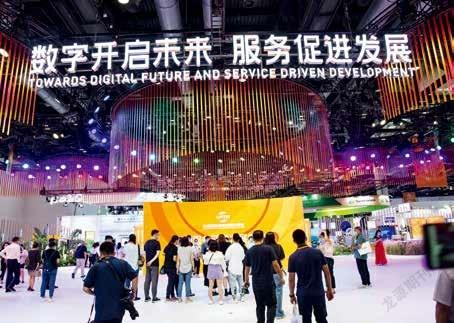Economic Outlook 2022
2022-02-24byYuMiaojie
by Yu Miaojie
The many uncertain- ties of 2021 such as the raging of the COVID-19 pandemic, complicated and severe international situation, and poor circulation of industrial and supply chains couldn’t stop the Chinese economy from maintaining solid development momentum on the whole, with the fundamentals of long-term improvement unchanged.
However, China is also grappling with the sobering reality that current economic development is facing triple pressures of shrinking demand, supply shock, and weakening expectations. In the current period and the foreseeable future, the Chinese economy will face a complicated situation.
Complicated Economic Situation under Triple Pressures
The COVID-19 epidemic has suppressed overall demand from society, weakened consumption and investment growth, and acutely shocked enterprises lower on the industrial chain. From 2020 to the third quarter of 2021, the average growth rates of consumption and investment were 3.9 percent and 3.8 percent, respectively, significantly lower than expected. Although manufacturing investment is growing rapidly, it’s hardly a solid hedge against the slowdown in real estate and infrastructure investment.
The supply shock has been primarily manifested with broken supply chains and soaring prices of energy and commodities. Affected by the spillover effect of macroeconomic policies of some Western countries, supply shocks have caused imported inflationary pressure in the Chinese market.

Weakening expectations led domestic and foreign investors and market entities to have quite different views on China’s economic outlook. For example, the Organization for Economic Cooperation and Development’s forecast of China’s economic growth rate for 2021 was 8.1 percent, and it would drop to 5.1 percent in 2022. The figures from the International Monetary Fund were 8 percent and 5.6 percent, respectively. Currently, China’s economy is in a transition period from high-speed growth to high-quality development. This transition needs China to adopt new measures in some areas such as adjusting education and training sectors, strengthening anti-monopoly supervision of the platform economy, and pursuing common prosperity. In such a period of change, the top priority of the current economic work is to stabilize expectations, which requires the correct interpretation of China’s economic prospects, opportunities, and challenges.
Proactive Fiscal Policy as a Major Boost
According to the annual Central Economic Work Conference held in December in Beijing, proactive fiscal policies will continue to be implemented in 2022. China will seek to pay more attention to efficiency and precision while maintaining the intensity of fiscal expenditures. One proposal demands special attention: Policy efforts should be implemented in advance appropriately. It means that before the expected spillover effects from the macro-policies of other countries occur, policymakers at all levels need to take preventive measures. In the current situation of limited financial incremental resources, it is necessary to improve the efficiency of capital use. The focus should be on new tax cuts and fee reductions and appropriate advancement of infrastructure construction.
Monetary policy should remain flexible, stable, and sustainable, and keep liquidity reasonably ample. It should be noted that the Central Economic Work Conference pointed out that financial institutions need to increase support for the real economy, especially small and micro enterprises, technological innovation, and green development. So, in 2022, authorities are expected to increase the scale of support for small, medium, and micro enterprises and provide more relief to enterprises struggling to fight the pandemic. Keeping liquidity reasonably ample will also support the real economy, especially floundering industries, and ensure they make steady progress and overcome difficulties.
The meeting also emphasized that fiscal policy and monetary policy should be coordinated, and cross-cyclical and counter-cyclical policy adjustments should merge. Counter-cyclical adjustment aims to promote economic stability and generally focuses on the short term. Cross-cyclical adjustment allows policy leeway for future uncertainty.
In general, the goal of 2022 is to enlarge the economic pie while seeking fairness. Policies will have three major focuses: First, promoting market-oriented allocation of factors under the principles of openness, justice, and fairness. Second, seeking streamlined administration and delegation powers, improved regulation and upgraded services to improve business environment and investment facilitation. Third, continuing proactive fiscal and prudent monetary policies to stimulate domestic demand and promote consumption.
